Which AI tools do most professionals use in 2025?
Based on a survey of 610 content professionals from around the world, this blog explores the top AI tools they use, their benefits, and what they think of them.
Written by Lucie Simonova

Based on a survey of 610 content professionals from around the world, this blog explores the top AI tools they use, their benefits, and what they think of them.
Written by Lucie Simonova

Content professionals use a variety of tools to get their work done every day. Whether they’re planning, creating, managing, or optimizing content, the right tools can make each stage much more efficient. From organizing ideas to fine-tuning the final piece, these tools help them maintain quality content and stay productive.
To better understand which tools matter most, we’ve surveyed 610 content professionals from around the world across different industries, including highly regulated fields like healthcare. The findings are all in The content creator’s toolbox 2025, a report that takes a deep dive into the tools content teams rely on daily, whether for analytics, localization, social media management, or AI-powered assistance. The full report, packed with insights and stats, will be released in April—stay tuned for that!
One of the key takeaways? AI tools have become an essential part of the content workflow. They assist with research, writing, editing, and even strategy. But while AI is widely used, content professionals also have their thoughts and concerns. In this blog, we’ll focus on the AI tools favored by most of our respondents—what they do, why they’re useful, and what professionals think about using them.
As the graph below shows, AI is something most content professionals use regularly. Only 5% say they don’t use AI at all, while 74% of content professionals use it at least weekly, with 39% of them using AI tools on a daily basis. From this, it is clear that AI has become a standard part of the content creation process.
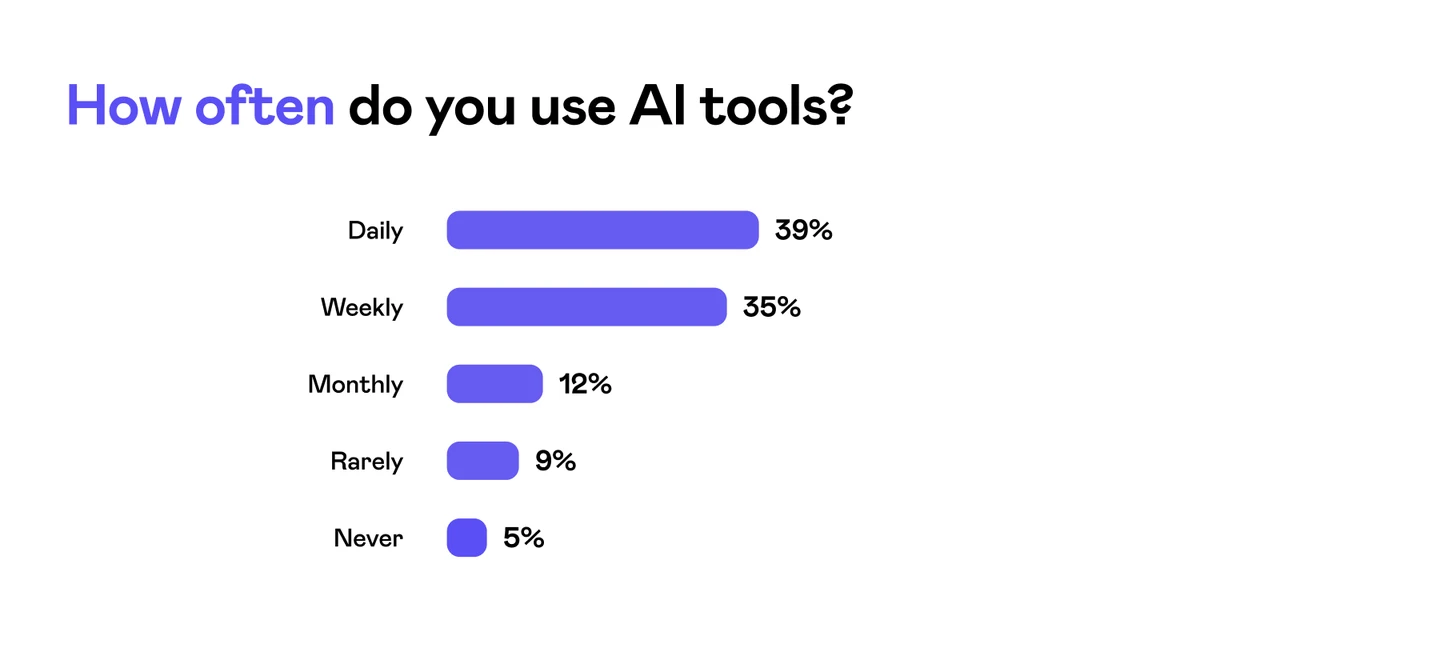
Let’s now take a look at how much time content professionals actually spend creating content. Almost half (46%) spend 2–4 hours per day on it, and another 27% spend 4–6 hours. On average, that’s 3.4 hours every day dedicated to writing, editing, and producing content.
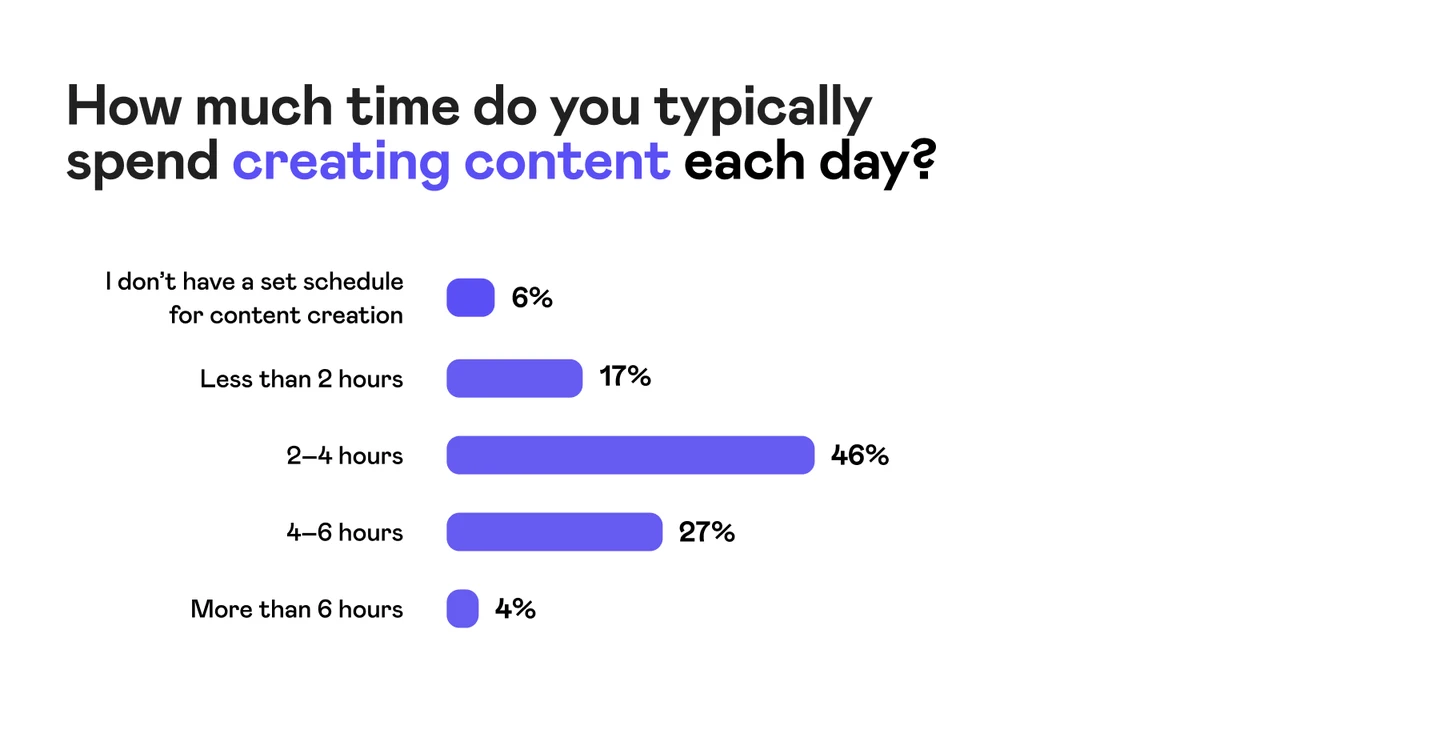
In the following graph, we can see that there is a connection between time spent on content creation and the use of AI tools. The more time someone spends creating content, the more often they use AI. For example, among those who spend less than two hours a day on content, only 34% use AI daily, but for those working 6+ hours on content, daily AI usage jumps to 61%. The heavier the workload, the more likely content professionals are to use AI.
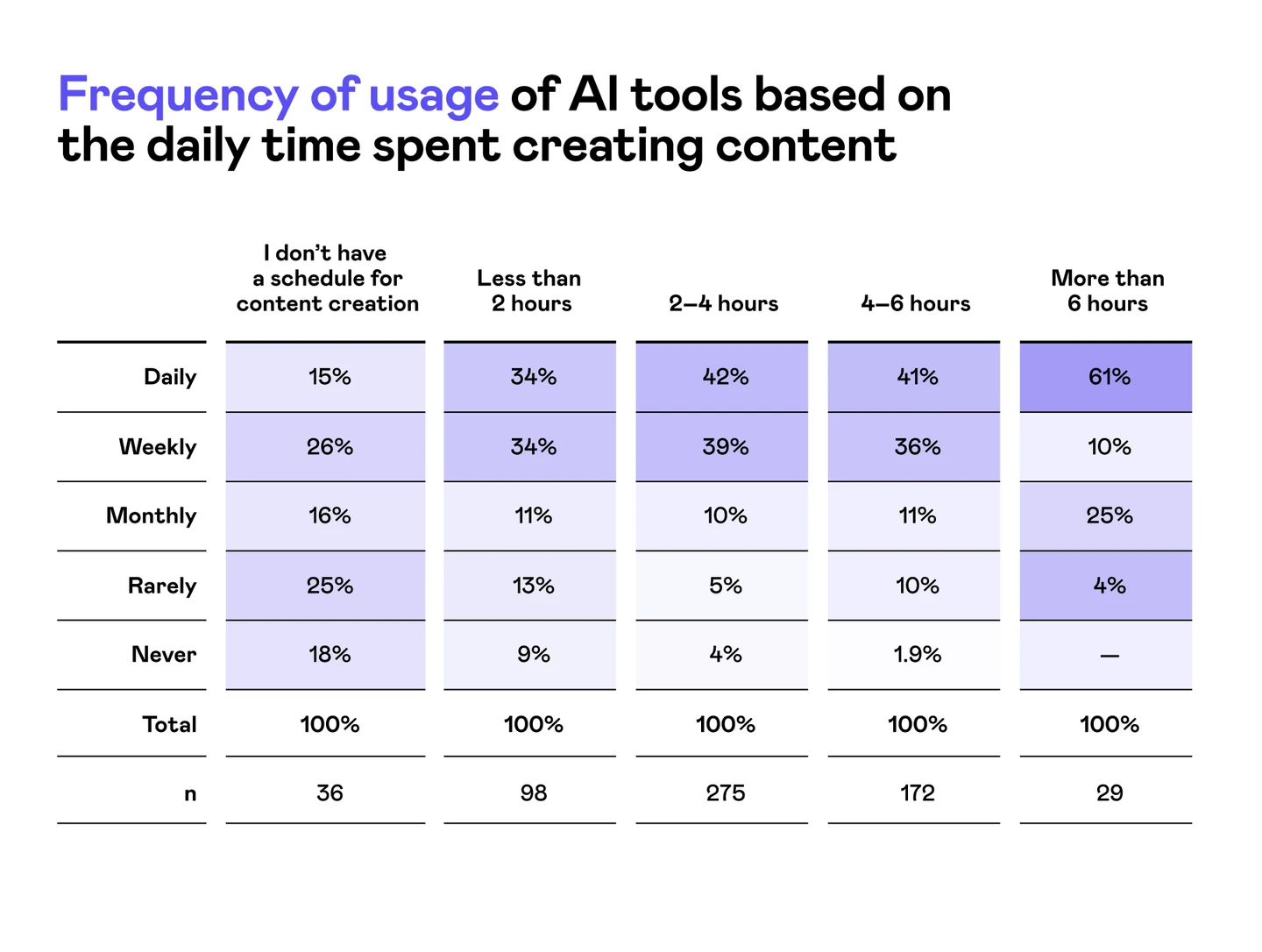
So, which AI tools are content professionals actually using? Let’s take a look.
When it comes to AI tools, three stand out as the most widely used:
ChatGPT is by far the most commonly used AI tool among content professionals. With 66% adoption, it’s clear that many use it to help them with efficient content creation. Whether it’s generating outlines, rewriting sections, or helping overcome writer’s block, ChatGPT has become an extension of many workflows.
Who should try it and why? ChatGPT is great for content creators, writers, and teams needing help with idea generation, quick drafts, summaries, or brainstorming. Its versatility makes it a fitting choice for those looking to streamline content creation or generate fresh ideas fast.
At 32% usage, Google’s Gemini has also found its place among content creators. While it’s not as dominant as ChatGPT, it’s valued for its direct integration with Google Search and its ability to pull in real-time information. This makes it useful for fact-checking, quick research, and generating content that aligns with up-to-date search trends.
Who should try it and why? Gemini works well for those already within Google’s ecosystem, offering powerful summarization and reasoning abilities—a great choice for researchers, content planners, and creators who need both text and image generation.
Grammarly has been around for a long time, and with 16% usage among content professionals, its AI-powered features continue to be relevant. Unlike generative AI tools, Grammarly focuses on refining and improving existing content—offering suggestions for clarity, conciseness, and tone adjustments.
Who should try it and why? Grammarly is great for writers, editors, and anyone needing to refine their grammar, tone, and clarity, ensuring their content is polished and on-brand. It can help fine-tune content to be error-free, making it especially valuable for non-native English speakers or teams with tight deadlines.

Beyond the big three, other AI tools have a smaller but still notable presence among content professionals, each catering to more specific needs:
There might be a few reasons for why these tools aren’t adopted as widely as ChatGPT. Some serve more specific, niche use cases rather than general content creation, and some are simply newer and less well-known, and many content professionals may prefer to stick to what they already know.
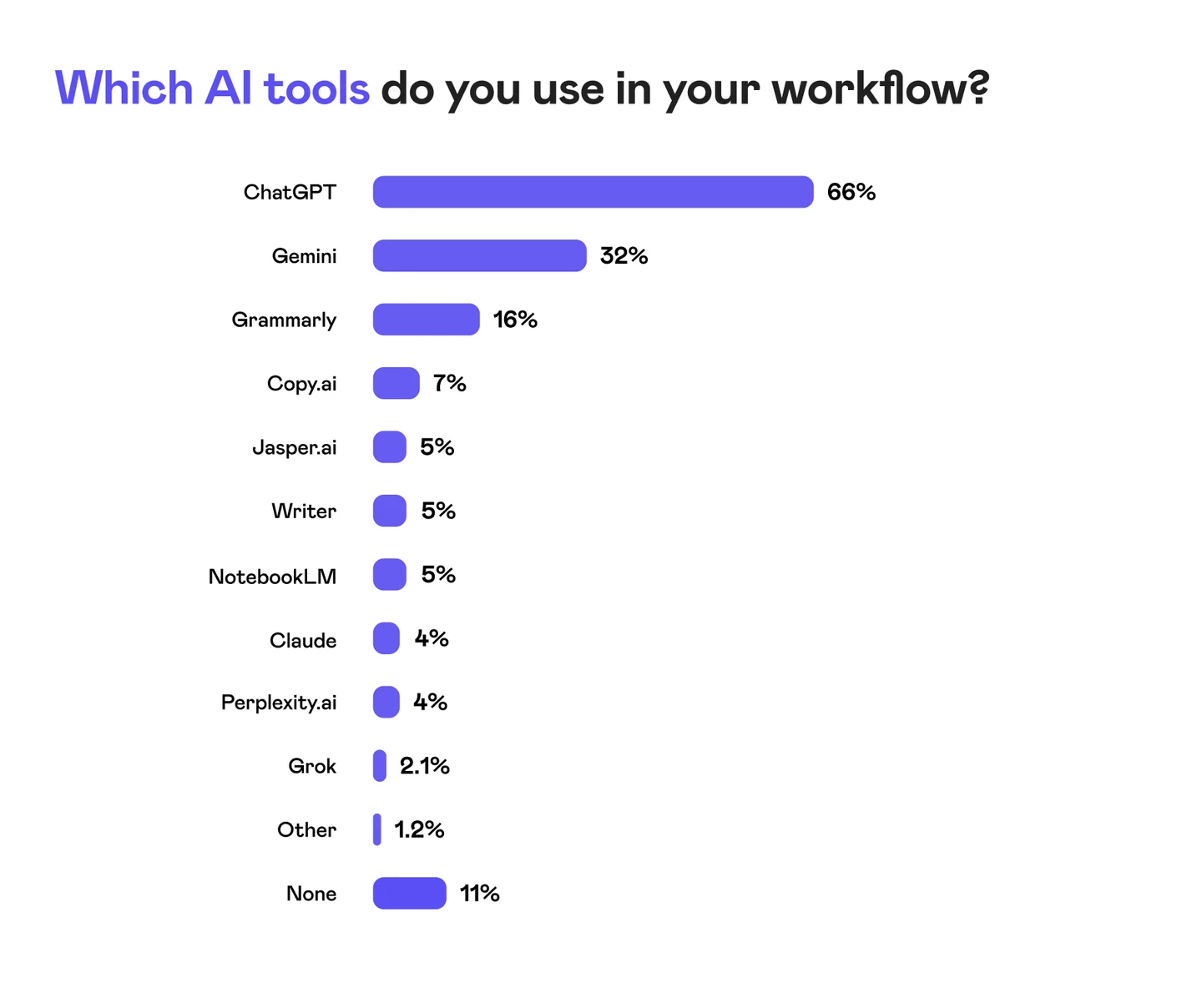
Although AI tools are widely used, some content professionals still have security concerns. The graph shows that while 25% feel confident in the security of AI tools, 43% have some concerns, and 23% are unsure but remain cautious.
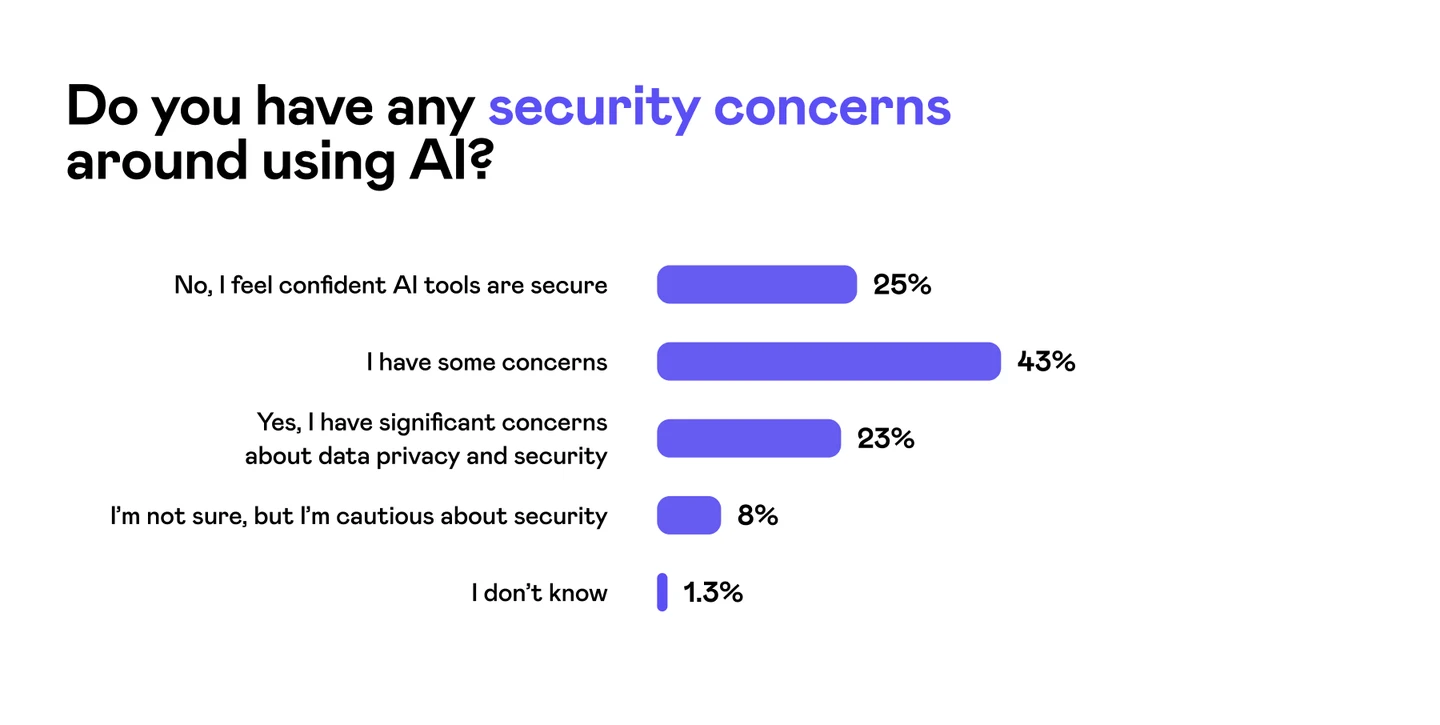
This might stem from the fact that AI tools often handle sensitive content, which raises questions about data privacy and how information is stored and used. Additionally, many of these tools operate on cloud-based platforms, which can sometimes lead to concerns around data breaches or unauthorized access.
As AI continues to evolve and integrate into workflows, it will be important for providers to reassure users by being transparent about their security measures and data protection policies. With that being said, let’s now take a look at how we see AI at Kontent.ai.
At Kontent.ai, we prioritize the responsible use of AI in both our internal processes and product. We aim to:
With our enterprise-grade security, businesses can rest assured they always safeguard their brand and protect their reputation.
As organizations explore the capabilities of AI, there might be concerns about its impact. Click here to understand more about our commitment to Responsible AI.
Organizations across industries, including highly regulated industries like finance and healthcare, trust our AI-powered tools. For instance, Newcastle Building Society, a financial institution with strict compliance and accessibility requirements, uses AI in Kontent.ai to streamline content creation. By leveraging AI, their team works more efficiently while ensuring that the final content aligns with the high standards required in their sector.
Some may have concerns about AI’s ability to provide accurate, compliant, or high-quality content. Above all, it’s good to keep in mind that AI in Kontent.ai is not meant to replace human expertise. Instead, it acts as an assistant to support content professionals by helping with automating tasks, speeding up the review processes, or providing strong first drafts that can then be polished and finalized by the content team to ensure accuracy and compliance.
If you’re interested in learning more about the AI assistance available in Kontent.ai, here is a list of resources that can help you on your journey:
When AI is integrated thoughtfully into content operations, it can boost efficiency, save time, and let you focus on creating impactful content that resonates with your audience.

What if we told you there was a way to make your website a place that will always be relevant, no matter the season or the year? Two words—evergreen content. What does evergreen mean in marketing, and how do you make evergreen content? Let’s dive into it.
Lucie Simonova

How can you create a cohesive experience for customers no matter what channel they’re on or what device they’re using? The answer is going omnichannel.
Zaneta Styblova

To structure a blog post, start with a strong headline, write a clear introduction, and break content into short paragraphs. Use descriptive subheadings, add visuals, and format for easy scanning. Don’t forget about linking and filling out the metadata. Want to go into more detail? Dive into this blog.
Lucie Simonova